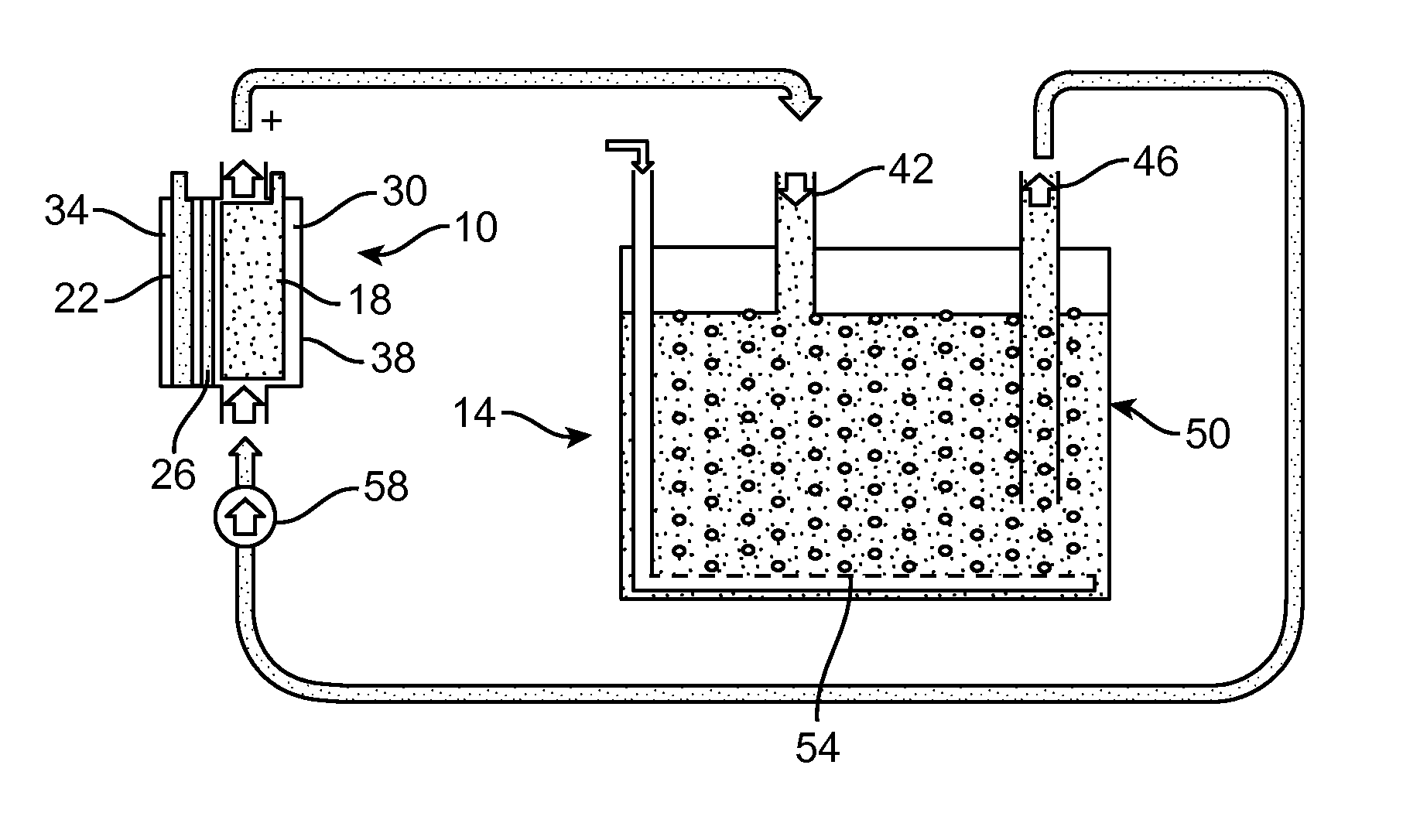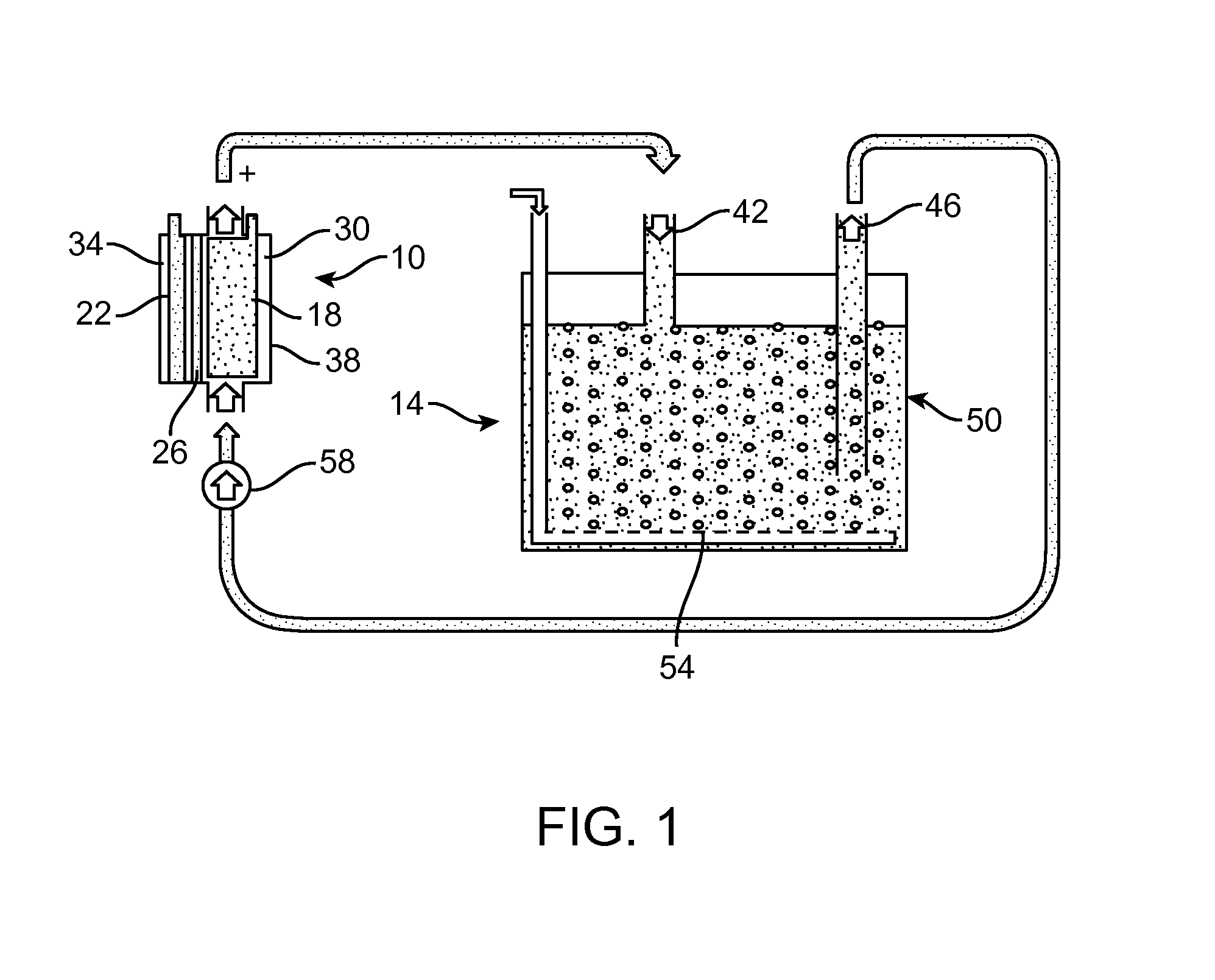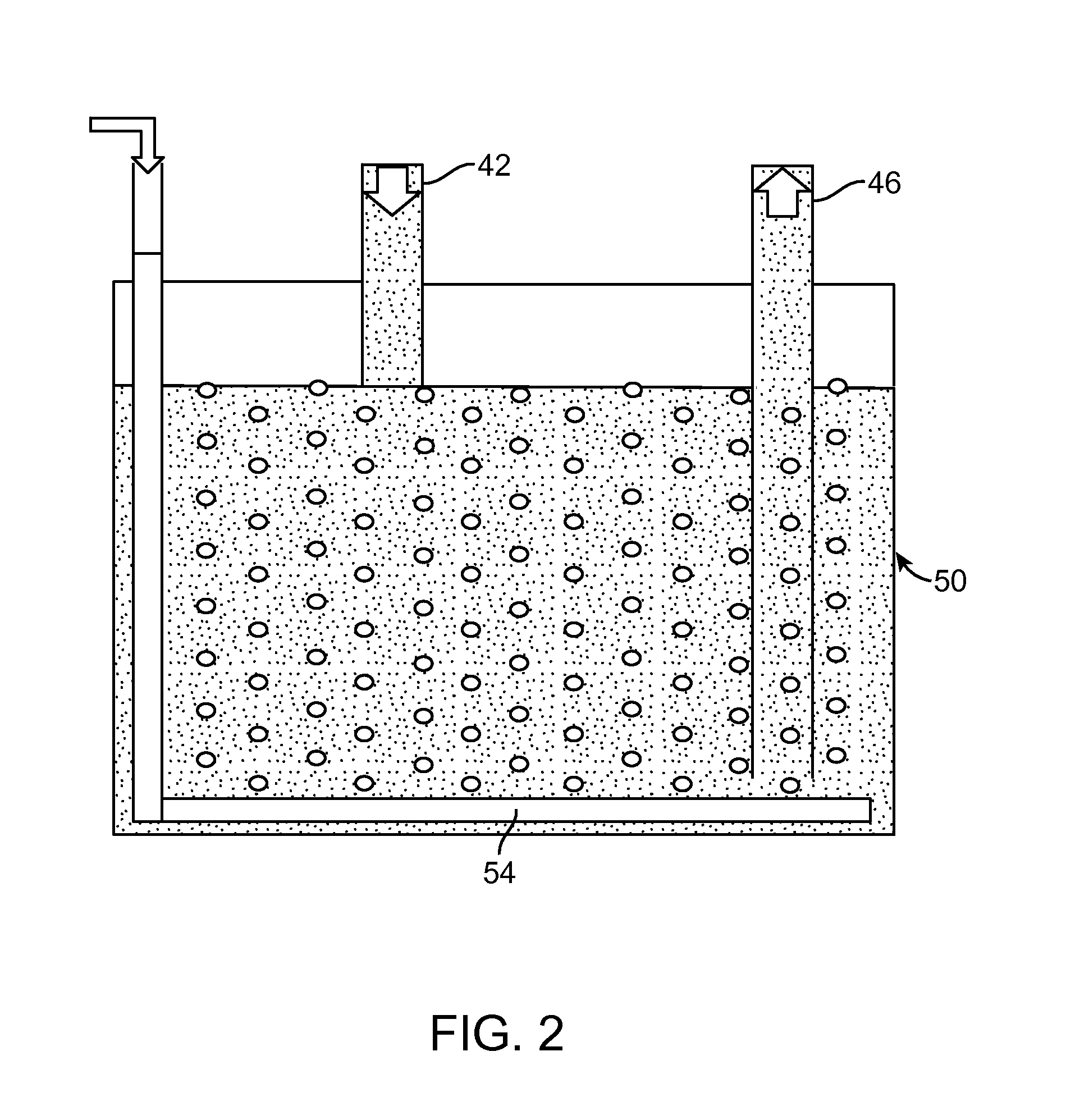Metal-air flow batteries using oxygen enriched electrolyte
- Summary
- Abstract
- Description
- Claims
- Application Information
AI Technical Summary
Benefits of technology
Problems solved by technology
Method used
Image
Examples
example
[0065]An experimental Li-air flow battery was prepared. The cathode electrode does not open directly to the atmosphere to receive the oxygen; instead it circulates the electrolyte continuously between the electrochemical reaction unit and electrolyte storage unit (FIG. 3). For example, during discharge, the fresh electrolyte which is saturated with oxygen is pumped into the electrochemical reaction unit, while the used electrolyte will be sent to the oxygen exchange unit to be refreshed. In the Li-air flow battery, the anode is a piece a Li-metal foil (Alfa Aesar, 99.9%, 0.75 mm thickness). A piece of separator (Celgard 2400, Celgard LLC, Charlotte N.C.) was placed between a Li-metal foil and a lithium-ion conducting glass-ceramic (LIC-GC) membrane (Ohara Inc., 0.15 mm thickness). The cathode is a carbon nanofoam. The aqueous electrolyte at the cathode and electrolyte container was made with 0.85 M CH3COOH (HOAc, Sigma Aldrich, ≧99.7%) and CH3COOLi (LiOAc, Sigma Aldrich) in deionize...
PUM
 Login to View More
Login to View More Abstract
Description
Claims
Application Information
 Login to View More
Login to View More - R&D
- Intellectual Property
- Life Sciences
- Materials
- Tech Scout
- Unparalleled Data Quality
- Higher Quality Content
- 60% Fewer Hallucinations
Browse by: Latest US Patents, China's latest patents, Technical Efficacy Thesaurus, Application Domain, Technology Topic, Popular Technical Reports.
© 2025 PatSnap. All rights reserved.Legal|Privacy policy|Modern Slavery Act Transparency Statement|Sitemap|About US| Contact US: help@patsnap.com



